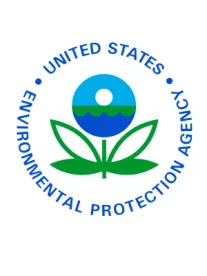The United States Environmental Protection Agency (U.S. EPA) has released its long-anticipated Proposed Rule to designate the “forever” chemicals PFOA and PFOS as hazardous substances under the Comprehensive Environmental Response, Compensation, and Liability Act (CERCLA or Superfund). This is the first time that U.S. EPA has directly designated a CERCLA hazardous substance by a rulemaking. The Proposed Rule represents a watershed moment in the agency’s ongoing effort to regulate per- and polyfluoroalkyl substances (PFAS) – the broader class of chemicals to which PFOA and PFOS belong. A final listing for these compounds will trigger new reporting obligations and will impose liability under new circumstances, including increased scrutiny on current and closed Superfund sites, and a potential new focus on environmental justice.
The Primary Impact will be Joint and Several Liability under CERCLA
The primary impact of the Proposed Rule will be to include PFOA and PFOS in Superfund’s strict, joint and several liability regime. U.S. EPA will have the authority to require potentially responsible parties (PRPs) to remediate PFOA and PFOS contamination, and PRPs that incur costs to investigate or remediate PFOA and PFOS contamination will be able to use CERCLA’s cost recovery and contribution provisions to file lawsuits against other PRPs who may have caused or contributed to the contamination.
Currently, U.S. EPA has the authority to conduct a response action to address a release of a “pollutant or a contaminant” (which the agency argues includes PFOA and PFOS now), but only if U.S. EPA first finds that the release may present an “imminent and substantial danger” to the public health or welfare. CERCLA does not impose liability upon responsible parties for releases of a pollutant or contaminant that is not a hazardous substance. The Proposed Rule could also allow the agency to reopen closed Superfund sites to address PFOA or PFOS. U.S. EPA also predicts its action will expand the scope and pace of PFOA/PFOS remediation by, among other things:
-
Permitting the agency to respond to PFOA and PFOS releases without first having to make the imminent and substantial danger finding for pollutants or contaminants
-
Giving the agency the authority to require PRPs to investigate and remediate PFOA and PFOS releases
-
Allowing the agency to recover its costs of investigation and cleanup from PRPs
-
Allowing PRPs that conduct PFOA and PFOS cleanups that are consistent with the National Oil and Hazardous Substances Contingency Plan (the NCP) to recover their cleanup costs from other PRPs.
In addition, under CERCLA, releases of hazardous substances that exceed a threshold quantity have to be immediately reported to the National Response Center – under the Proposed Rule, the reporting threshold for PFOA and PFOS will be one pound.
Preparing for a Final Rule
Given the ubiquity of these compounds in the environment, the currently limited options for treatment, and the near-zero draft advisory levels for drinking water that U.S. EPA proposed in June 2022, if the Proposed Rule is finalized, it could trigger far-reaching remediation obligations in the years ahead.
To prepare, manufacturers in a variety of industries should closely review their chemical management procedures, including sending questionnaires to suppliers to confirm whether their products contain PFOS, PFOA, or any precursors. In addition, companies that may have in the past used products containing either of these compounds should review their corporate records policies with counsel to determine whether to retain corporate purchasing records and any other documentation that may be helpful in quantifying actual use and management of these materials.
In addition, because PFOA and PFOS would be subject to CERCLA’s release reporting requirement, U.S. EPA will be able to collect a considerable amount of additional data on the nature and location of PFOA and PFOS releases throughout the United States. The accumulation of PFOA and PFOS release data may help U.S. EPA effectuate another cornerstone of its current regulatory strategy — namely, environmental justice — by allowing the agency to focus its response efforts on communities with low-income and minority populations. Companies with operations in such “environmental justice communities” may want to prepare for regulatory scrutiny of their operations with a focus on PFOA and PFOS.
Operations with a wastewater discharge or air emissions permit should consider whether monitoring requirements or limits for PFOA and PFOS compounds in their discharge permits would support an argument that emissions are within CERCLA’s “federally permitted release” exclusion set forth at 42 U.S.C. § 9601(10)(C).
Open Questions
The Proposed Rule, if finalized in its current form, will usher in an entirely new phase in CERCLA’s robust history of remediating contaminated sites, but at the same time, leaves many crucial questions unanswered, including:
-
Will EPA designate other PFAS as hazardous substances?
PFOA and PFOS are two chemical compounds among thousands of others that fall into the category of PFAS. State legislatures and state agencies, which can act much more nimbly than EPA, have already promulgated binding standards and/or advisory levels for a number of other PFAS, including PFNA, PFBS, PFHxS, and Gen-X, among others. U.S. EPA anticipates issuing an Advance Notice of Proposed Rulemaking after the close of the Proposed Rule comment period to seek public comment on designating other PFAS chemicals as CERCLA hazardous substances.
-
What cleanup standards will govern PFOA and PFOS remediation?
There is a current patchwork of state regulatory standards relating to PFAS, ranging from binding cleanup levels, advisory guidances, or no PFAS standards at all. Further complicating matters, in June 2022, EPA issued interim drinking water health advisories for PFOA and PFOS that drastically lowered its prior advisories from 400 ppt to 0.004 ppt for PFOA, and from 200 ppt to .02 ppt for PFOS. In the Proposed Rule, EPA acknowledges that the new interim levels are below the levels at which existing analytical methods can even measure these compounds in drinking water, yet the agency does not expect the numbers to be revised upwards once finalized. It is not at all clear what standards may govern in a PFOA or PFOS cleanup action, and it may be that this is determined on a case-by-case basis.
-
How will regulated industries manage the costs of PFOA and PFOS cleanup?
PFAS contamination can be wide-ranging due to several factors unique to the chemicals themselves. PFAS can be deposited in environmental media through a wide variety of pathways, including wastewater streams, air emissions stacks, and leaching from soil to groundwater. Further, unlike remediation technologies for other well-studied contaminants (such as chlorinated solvents), existing remediation technologies for PFOA and PFOS are nascent at best and are expensive at large scale. It is therefore often difficult to even estimate accurate cost ranges for PFOA and PFOS cleanups, but costs can easily run into the millions of dollars at complex sites. Although the recently passed Infrastructure Investment and Jobs Act provides $3.5 billion over five years for Superfund cleanups, the money may not go as far as planned if cleanup costs for PFOA and PFAS sites are exponentially higher.
-
How will EPA handle potential PFOA and PFOS contamination at closed Superfund sites?
-
The Proposed Rule could allow U.S. EPA to reopen closed Superfund sites based on the receipt of new information about the presence of hazardous substances at the site. As a result, PRPs who may have long ago stopped budgeting for remedial costs at existing or legacy locations may find that they once again need to open their pocketbooks.
Next Steps and Timing
Once the Proposed Rule is published in the Federal Register, U.S. EPA will accept public comments for 60 days. After the close of the comment period, the agency is required to respond to the comments before publishing a final rule.
In addition, it is notable that U.S. EPA will also be accepting comments on its position that the statute allows the agency to make this proposed designation without consideration of the costs of its action to a regulated industry.







 />i
/>i
